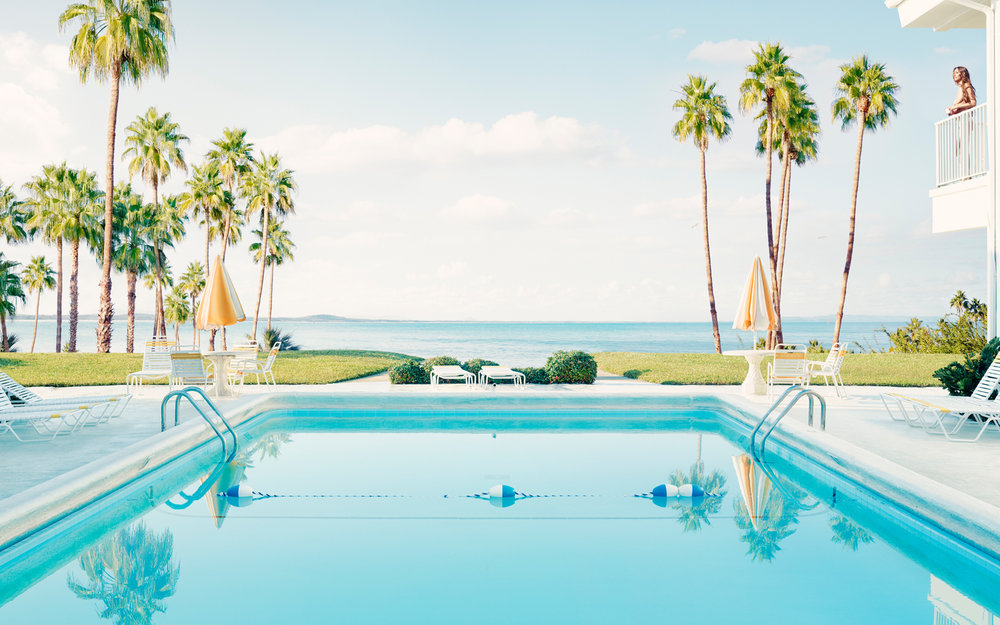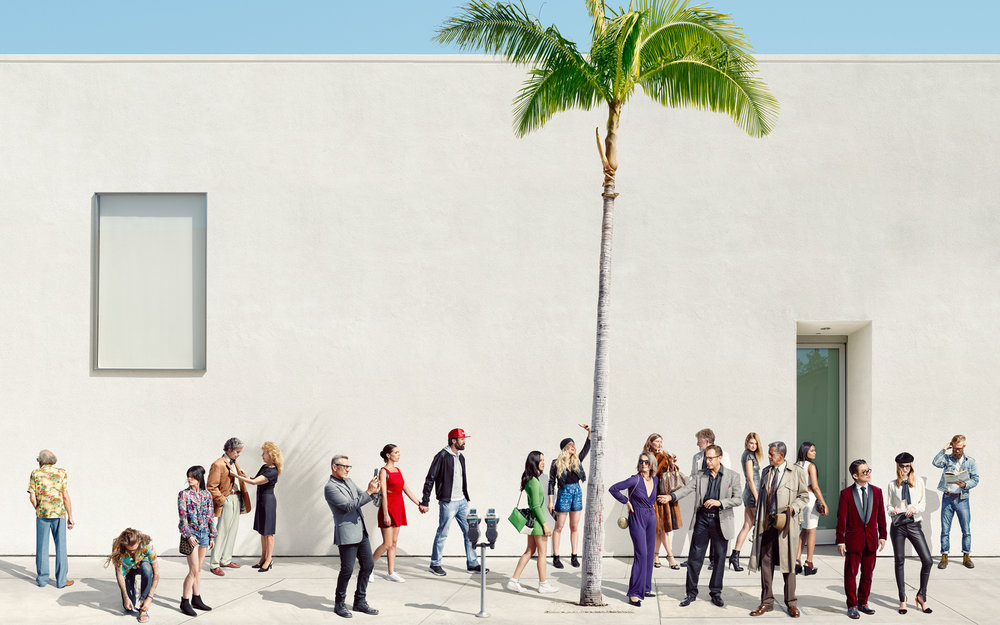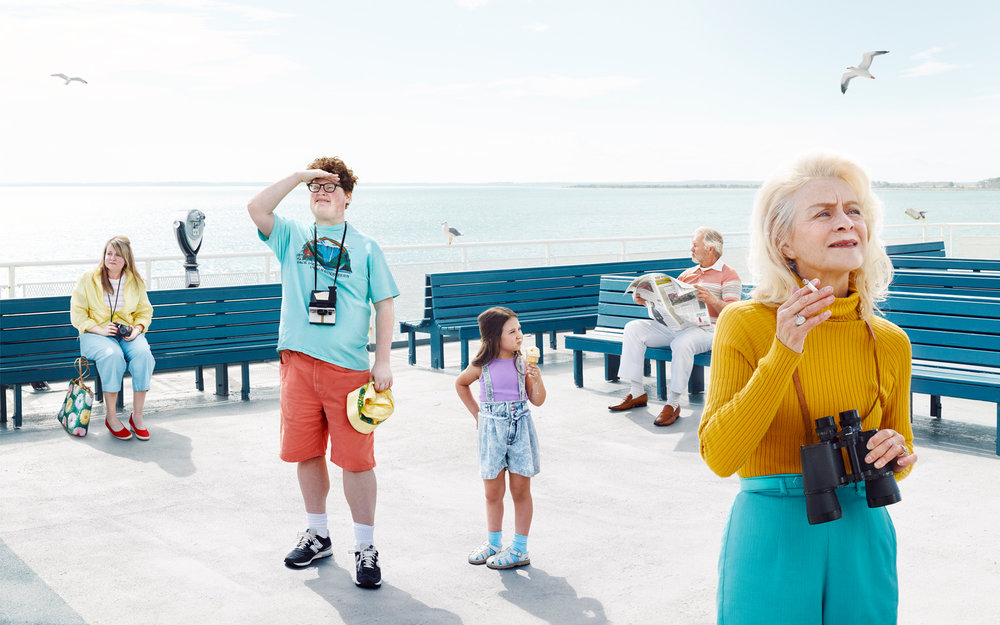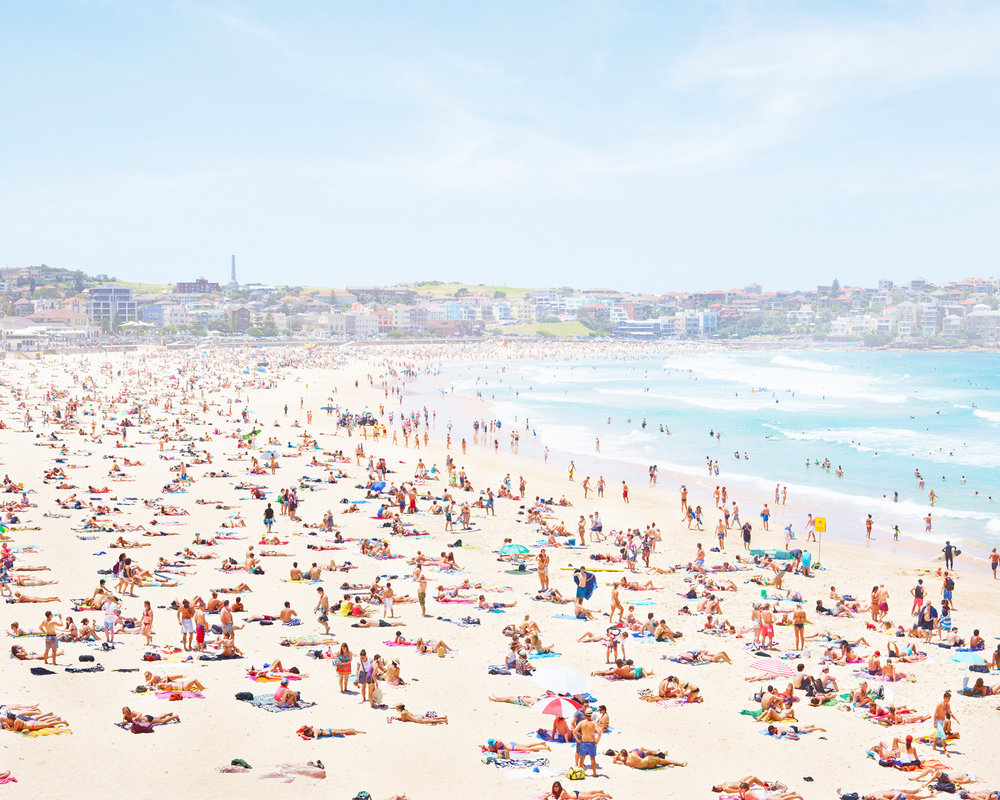DEAN WEST - RE-IMAGINING REAL MEMORIES
RE-IMAGINING REAL MEMORIES
Australian photographer Dean West meticulously constructs his images. In his older work, history and mythology were a major influence. These days he creates his own myths that are based on his own or friends’ memories that somehow got distorted over time. The essence is still there, but details changed. Just like stories change every time they are told by someone else. In the end, you ask yourself: “What’s real?”
Can you tell us about your educational background?
Like a lot of kids, I studied photography throughout high school. I then completed a Bachelor of Photography with majors in Advertising and Visual Arts at the Queensland College of Art (QCA, Griffith University). It was here that my true foundation in photography and art began.
What was your first paid job as a photographer?
My first paid job was a 12-hour product shoot photographing ribbons.
Fast forward to today. Quite a few of your images seem inspired byhistory and mythology. Is that a particular passion of yours?
Studying at QCA forced me to learn a lot more about the history of photography and art in general. It’s important to know where the medium has come from so you can both challenge and experiment with new modes of vision and creation. In some of my older works I appropriated characters from mythology, however, today I’m more interested communicating ideas that involve my surrounding environment.
What’s the story behind Palm Springs I and II? Can we see them as modern day American myths?
Both of these works come from my ongoing series “2015-2020,” where I reconstruct personal experiences and encounters. The works draw inspiration from how we see and record memories, starting with a foundational moment and then, upon re-accessing the memories, re-imagining and constructing them. Over time these memories end up getting further and further from the truth, as the mind inputs information into the scene. The series also draws inspiration from a Hollywood stylized aesthetic, and how it can draw in an audience using the power of aesthetic force.
Palm Springs II is based on a story I was once told. I was at a karaoke bar with a friend. We were just drinking. Suddenly, a group of young military boys came into the bar, and my friend, a middle-aged gay man, became really close with one of them. He was 19, had a girl on his shoulder and said he had just done time in Afghanistan. He had a weekend off.
As the night progressed my friend, Sean, became more and intrigued by this kid. I pulled him aside and said: ‘Sean, you are falling over him. You know, what are you doing? Clearly he is with that girl!’ And he was like: ‘Didn't you know? He just gave me his number!’
He went on to tell me that Palm Springs is about 45 minutes away from a large military base called 29 Palms. And how these kids, these young military guys, go away, do their service and are kept outside civilization. They only have these very small windows when they come to the local town to party. Basically, these young guys get to Palm Springs just looking for affection. Whilst he is telling me the story, I am in shock, and because I was in Palm Springs, and kind of challenging the whole nostalgia of the mid-century architecture with this story. This is the image that was in my mind while he was telling me that narrative – this is how my imagination was constructing that scene.
Between 2009 to 2012, you worked with the amazing Lego artist Nathan Sawaya creating In Pieces. What was the idea behind this series?
In early 2009, I started drafting up some ideas for a new series which would incorporate LEGO® bricks as a way of building the photographs. The bricks would appropriate the digital process using a somewhat pixelated approach. I ordered a box of gray bricks from LEGO® and had them sent to me in Australia. After receiving the package, and realizing I had no idea where to start (I never played with LEGO® as a kid) I looked up some LEGO® artists online. I remember discovering Nathan’s work on his site and thinking, “I want to build something like this guy, these works are amazing.” My partner looked at me and said: “Why don’t you contact him?” So I did.
Nathan replied by saying: ‘I love it, when are you coming to New York?” Two weeks later, I was in New York meeting with Nathan and we began to reshape a concept that portrayed a unique and combined vision. I knew by collaborating with Nathan there would be no limitations in how far we could go with the sculpture integration.
The images were constructed by using modern photography techniques combined with Sawaya’s LEGO® sculptures placed within the scenes. The combination not only builds on and accentuates the images aesthetic, but also compels the viewer to deconstruct each tableau, thereby exposing elements of the construction of cultural identity itself. Isolated individuals stand in recognizable but chillingly empty minimalist scenes with geometrical design, derived from common features of the American landscape. We actually traveled across the country together to find these locations. Their averted eyes gaze into nothingness, and a strange feeling of aloofness and displacement reverberates. Nathan's brick-by-brick constructions resemble an almost pixilated quality – much like digital pixels that construct a digital image. Layer by layer, brick by brick, In Pieces was constructed and exhibited.
“Palm Springs II is based on a story I was once told. I was at a karaoke bar with a friend. We were just drinking. Suddenly, a group of young military boys came into the bar, and my friend, a middle-aged gay man, became really close with one of them. He was 19, had a girl on his shoulder and said he had just done time in Afghanistan. He had a weekend off.”
How many images on average make up a Dean West image?
It depends really. Some images are captured “in camera”. Both of the Palm Springs images were done like this. And then some images require the compositing of several scenes and elements to ensure the final result is what I had originally envisioned. On average I would say an artwork might contain anywhere between one to 10 images.
How much time do you spend on Photoshop creating an image?
The post-production phase is actually the quickest part of an artwork production as most of the hard work such as the concept development, location scouting, casting, design, set building and shooting has been done. We use Photoshop as a vehicle to combine all of those elements together. I would say on average the post-phase might take anywhere between two to four days depending on the complexity of the image.
Let’s take another image, say Beverley Hills Gallery. Could you briefly tell us what's the story behind it and how it was created?
I was in Los Angeles already in pre-production on two other memories from the “2015-2020” series. There was an exhibition opening that I really wanted to see at the Gagosian Gallery in Beverly Hills by Alex Israel and Brett Ellis, the author of American Psycho. The show exhibited these idyllic Californian scenes paired with Ellis’s text over the top, kind of like the opening credits of feature films. All in all, the show really played to LA’s celebrity culture, so it was a place to be seen, if you get my drift. Unfortunately though I wasn’t able to make it. The next day I was talking to a friend who gave me a play-by-play of the spectacle and while this was happening I was imagining what I had missed out on. From there I began researching some of the press images of what the crowd was like and began to visualize my own constructed image of the event. From fur coats to hipsters the image became a life of it’s own. Due to the difficulties in getting permits for a street production, I decided the best way to shoot this was in components. The background was shot in several stages to construct a clean, brightly lit scene that evoked the Californian aesthetic. What I liked about this background especially was its balance. The large negative space of the gallery really emphasizes the size or value of the gallery with its walls almost dwarfing the visitors.
The talent were all cast over a month or so and brought to a rooftop studio in downtown LA where I recreated the lighting and perspective of the scene. From there it was about spending time with each character to produce a series of poses or movements that I could then work with in post-production. For me it becomes a kind of character study. I hope that one day I’ll be able to look back on this picture and feel that, through its style and appearance, it feels somewhat iconic of this era or generation, much like when we look at a painting from the 1900s.
Which photographers/artists do you really admire?
Andreas Gursky, Joel Sternfeld, Stephen Shore, William Eggleston, Stan Douglas, Jeff Wall, Alex Katz, David Hockney, Alex Colville, Jonas Wood - honestly I could go on and on.
What are you working on at the moment?
I’m currently in development on a new series which will go into production in November. All I’m willing to say at this point is that it’s nothing like I’ve ever done before. ;)
Where can we see your work later this year or in early 2017?
I have a retrospective opening in February 2017 at the Erata Museum in St. Petersburg, Russia. Outside of this, I will at some point be debuting my new series, which I’m very excited about!
INTERVIEWED BY PETER SPEETJENS







